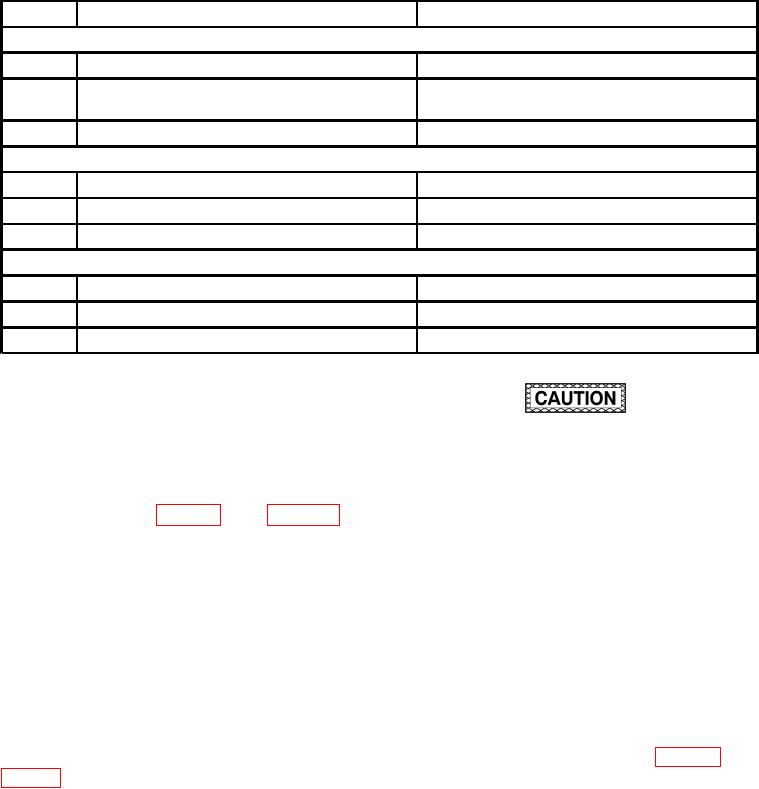
TM 1-1500-204-23-11
Ranking of Damaged Material Removal Techniques
Rank
Damage
Limitations
Large Damage
1
Kett Saw With Diamond-Coated Blade
Straight Lines
Die Grinder With Abrasive Disc or Dual
2
Slight Curves
Action Sander
3
Router With Diamond-Coated Bit
Slower/Template Recommended
Moderate Damage
1
Template Recommended
Router With Diamond-Coated Bit
2
Dual Action Sander
3
Drill Motor With Diamond-Coated Hole Saw
Multiple Sizes Required
Small Damage
1
Dual Action Sander
2
Drill Motor With Diamond-Coated Hole Saw
Multiple Sizes Required
3
Die Grinder With Carbide Rotary File
Slow
b. Penetration Damage. Severe damage to the
laminate will require the removal of the full thickness
of the structure before a repair is applied. As with all
damage removal processes, it is desirable to remove
Avoid breathing dust from cutting or machining
a minimum of sound material while removing all of
operations. Use vacuum equipment when
the damaged material. Careful NDI marking of the
available. Wear eye protection during all
damaged perimeter and tool control are required.
material removal operations. As a minimum,
Proper selection of cutting tools and cutters is also
wear a dust mask and ensure adequate
ventilation. Consult with your local safety
guidance on tool selection. For large damage removal
ofice for the appropriate personal protective
with long straight cuts, an Kett saw with a diamond-
equipment for your operation.
coated blade is the fastest and most accurate method.
Exercise care to avoid cutting excessive
When a slightly curved section is reached, a diamond-
undamaged plies or honeycomb core during
coated cut-off wheel mounted on a die grinder works
material removal. Loss of structural integrity
well. A hand operated cutting wheel is also adequate
may occur.
for most thin laminates (up to 0.100 inch thick). Curves
with tight radii will require the use of a router motor
(1) Template Method. A template works well
with a diamond-coated 1/4 inch bit. Moderate sized
for stabilizing the router bit during the routing oper-
damaged cutouts with only short straight sections
ation. Templates can be fabricated from aluminum
are best made with the router and diamond-coated
or iberglass stock and should be a minimum of 1/8
bit or a diamond-coated hole saw mounted in a
inch thick. A 0 degree router motor, router attach-
drill motor. Small damage, which its easily within
ment and router guide are required for this operation.
a small circular cutout, is easily accomplished with
The router setback distance shown in igure 6-3 must
the diamond-coated hole saw motor combination. See
be considered when making the template to ensure
table 6-1 for a ranking of cutting methods for particular
the correct damage outline is attained. Adjust the
applications.
position of the router bit in the router assembly to
compensate for the template thickness and to achieve
the depth of cut desired. Firmly attach the template
to the part surface with tape to prevent movement
during routing. Then move the router guide along the
template edge to establish the damage cutout shape.
Templates are limited to fairly lat surfaces. A new
template must be manufactured for each nonstandard
damage shape encountered.

